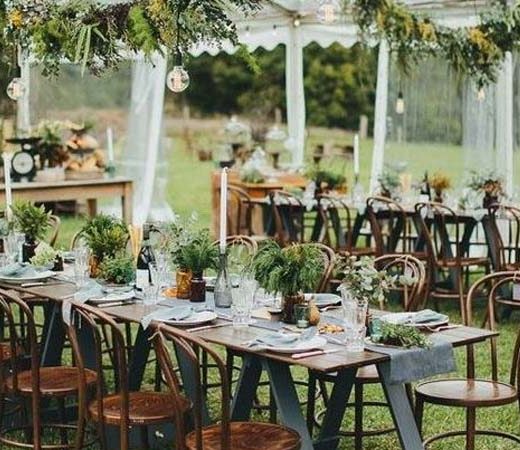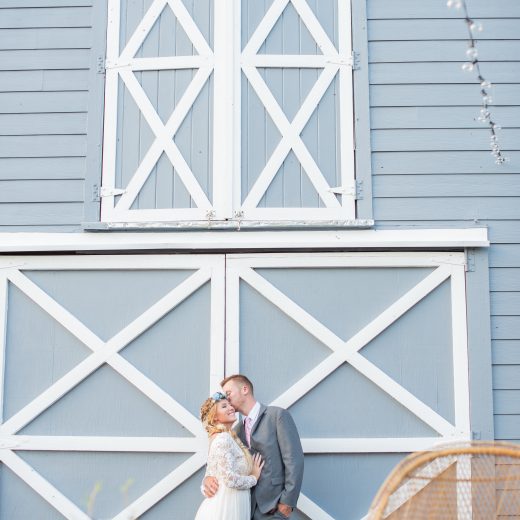Whether you prefer an open-air party under the stars or a sophisticated soiree in a grand hall, budgeting for your wedding reception can be quite a balancing act. Common sense will go a long way in helping you save money without sacrificing the elegance of your day. Consider our budget advice as your plan the wedding of your dreams!

- Budget Building
The first order of business is to discuss and agree upon a firm, realistic budget. Keep in mind that the average cost of a wedding is between $20,000 and $28,000. The reception will account for approximately 35 percent of this amount. If you need a little extra help managing your budget, a wedding personal loan may be an option for you. Just be sure to shop around for the best interest rate and repayment terms before signing on the dotted line.
- Choosing the Date and Time
The spring months of April, May and June and the fall months of September, October and November are considered peak wedding months. This is the time of year when most ceremonies and reception sites, caterers, musicians and florists are all booked at premium rates. The festive month of December, filled with holiday parties, is also considered a peak month. The more economical dates are the off-season winter months of January, February and March and the summer months of July and August. In addition to season, the day of the week can influence cost. Saturdays have long been the most popular day for weddings. You might consider Friday evening or Sunday for your celebration. Most wedding-related services and reception sites will negotiate better rates for weddings held on off days.
- The Guest List
Once the reception budget has been determined, you will need to address the size of the guest list. This is an all-important factor because the number of people you choose to invite will have the greatest impact on the overall cost, affecting everything from invitations to rentals and catering. Be sensible. If cost is an issue, the guest list will have to be modified.
- Managing the Menu
When planning a menu based on budget, discuss your finances realistically with your caterer. Their calculations are usually based on per-person cost, and can assist you in planning a menu. Sit-down meals are usually the most economical. The menu is limited to two or three main courses with set portions that are pre-plated and served to guests. Buffets offer a variety of choices, but can be a bit costly due to the lack of portion control and the need to have more food available to keep serving trays looking fresh. Serving a substantial variety of hors d’oeuvres at mealtime may seem to be an economical choice, but these tasty, labor-intensive treats can easily equal or exceed the per-person cost of a buffet or a sit-down meal.
- Budgeting for Beverages
The preferred choice for beverage service is an open bar, which is also the most expensive because charges are usually assessed at a fixed, hourly, per-person rate, regardless of consumption. Closing the bar at mealtime then reopening it after dinner is one way to trim costs. Sparkling wine can be substituted for traditional champagne, and serving a sparkling wine punch is a delicious and economical way to keep costs down. Another option is to supply the alcohol and soft drinks yourself, prearranging the return of any unopened bottles to your local liquor store for a full refund.
- Taking the Cake
The cost of your wedding cake hinges on the size of your guest list, since wedding cakes are usually priced per slice. If you’re on a budget, it can be more economical to order a fairly small yet fancy cake to catch your guest’s attention, while serving the majority of people from simpler sheet cakes made from the exact same ingredients.
- Financing Flowers
Flowers in season at the time of your wedding are more cost-effective than those out of season. Simple, hand-tied arrangements for your bridesmaids are not as labor intensive as traditional bouquets, and therefore are usually less expensive. Try to let your ceremony arrangements do double duty at the reception buffet and head tables. Place seasonal annuals in decorative pots at the guests’ tables. These flowers are simple, inexpensive and sentimental favorites, and guests may take them home afterward as a memento of the day.
As you negotiate prices with vendors, remember to get all arrangements in writing. Do not accept any oral contracts or promises, and be sure your vendor spells out the services you will be paying for. Find out precisely what deposits are required, when they are due, and the conditions and time frames for possible refunds.
Would you like to know more valuable tips to help with you wedding planning? Visit our blog for more great ideas!




